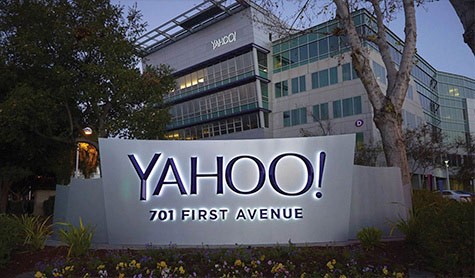What if you pursued the art of strategy much like the art of war, instead of approaching it as an arduous exercise? Imagine the thrill of identifying competitive weapons — unique assets that provide true value to the customer —deftly aligning them against your competitors to knock them off balance, clearing the way for a big score.
The Art Of Strategy
To do so requires going beyond simply analyzing the strengths, weaknesses, opportunities, and threats of competitors in a typical SWOT analysis, says Allan Cohen, a Boston-based strategy and organizational alignment consultant. While all enterprises have assets, the real “art” is to identify those that constitute a true competitive weapon and own them.
Cohen asks, “Is it something that can provide you a long-term advantage? Can it either block people from getting in or continue to enable you to raise the bar? Even if someone tries to come into your space, can you beat them next year?”
Unfortunately, competitive weapons are rarely immortal, explains Shideh Sedgh Bina, Insigniam co-founding partner, and editor-in-chief of IQ Insigniam Quarterly. “It is important to keep reevaluating them, and, as the competitive landscape and market changes, to turn obvious, and not so obvious, assets into new competitive weapons. Like any investment, these prized assets must also be nurtured, whether they are products, services, intellectual property, trade secrets, know-how, a unique brand position, exclusivity, or even people.” (click to tweet this!)
Apple offers a good example of reinventing to react to change, Cohen explains. “They are ahead but will they stay ahead? How much of their success was because of Steve Jobs? There was not enough insurance in the world to ensure Steve Jobs. He knew how to take strategic assets and overturn multiple, different markets. Apple was and is a personal computing company. They didn’t invent it. They invented how to deliver it.”
So how do you apply this to the art of strategy? Bina’s advice is to first consider your competitors, which, like your assets, may not be as obvious as you think. For instance, competitors can, and often do, come from businesses that aren’t selling a like product in your market.
“In consulting,” she explains, “you may lose a customer because they decided to do a project themselves. They didn’t choose anyone else, but you still lost the business. In another case, your customer may consider a similar product. Perhaps you are a cake caterer and the customer decides to rule out cake for candy or fruit, versus another cake product. The bottom line is that customers do what they want and don’t always come back to the same category.”
In many ways, it is more about “preventing competition,” than winning a head-to-head competition. “There are very few industries that are purely competitive,” says Cohen, noting that blocking and tackling can be equally effective.
“The top soda providers are especially adept at keeping competitors out of their space,” he notes. “Coca-Cola and Pepsi buy shelf space to keep the competing products out. They don’t allow room for others.”
So, how can you zero in on those assets that can help you win big against your competitors? It starts by asking a very fundamental question: “What do I have that my competitors don’t?” says Bina.
“Invariably you’ll end up with a list consisting of everything other than the basics to stay in business. Take each asset and rank it against its high value to the customer, as well as how difficult it is to duplicate,” she explains. “Ultimately, your weapons will emerge, and they may look very different from what you expect (click to tweet this!), especially if your market has undergone major changes.”
Consider the case of a major healthcare system, which came to the realization that some of their facilities, originally considered their most prized strategic assets, were actually weighing them down. Due to healthcare reform and the trend toward greater outpatient care, amassing more and more beds is now seen as a weakness rather than a strength.
“Taking a hard look at their competitive assets forced this enterprise to rethink their value, examining what they were going to do if all of these hospitals no longer provided competitive value?” Bina says. “Some of their once-prized locations landed on the ‘rethink’ side of the competitive weapon matrix, with strategic discussions shifting to what to do with the real estate. Suggestions ranged from turning one facility into an ambulatory care center to divesting others.
“With this same organization, the good news is that less tangible assets rose to the surface, including how to manage a growing stable of best practices as a competitive weapon. They found themselves asking, ‘Which were competitive weapons? Which could be outsourced?’ Ultimately, embedded innovation emerged as a key competitive weapon and led to rethinking its value, as well as how to prioritize resources around it.”
In the food and consumer goods industry, which is dominated by major players, Bina notes how another company realized that there was great value in its “smallness.” Unlike the industry giants, they turned their ability to be faster and more agile into a competitive weapon, beating their competitors on time-to-market, responsiveness to market shifts, and other variables.
Conversely, a large global food company used its local autonomy to create products specific to the regions it served —and won market share as a result. Another food company found its point-of-sale expertise gave it dominance over competitors that were lacking in this area.
 In all of these cases, personalization in the context of each business was an important consideration.
In all of these cases, personalization in the context of each business was an important consideration.
“Sometimes it also is possible to take a perceived liability and leverage it as a competitive weapon,” Bina adds, citing another example of a company in the food industry that, although a dominant player in most of its channels, was losing out in one channel based on a different, higher cost business model. By leveraging its category management and marketing know-how from its other channels, and bundling to include solution selling, it was able to bring its pricing in line.
Ultimately, when identifying strategic assets, it is important to start with a bold vision and ambition. Once you’ve identified your competitive weapons that support what you want to be, it’s all about “placing the bet and making it work,” says Cohen. “Strategy is just choice-making. Having intelligence helps, but it is always informed risk-taking (click to tweet this!). Once you place the bet, you have to commit and make it work.”
“Sometimes it also is possible to take a perceived liability and leverage it as a competitive weapon.”
— Shideh Sedgh Bina, Insigniam Co-Founder
(click to tweet this!)
One big question, he adds, is, “Do you have the leverage to make it work? Yahoo, for instance, is still struggling, even though they have a huge installed base. They have a lot of environments that people want to hang out in, but they confuse everybody, even the strategists. Who are they? Maybe they are content publishers. It is hard to see a big future.”
In this sense, Cohen stresses that “Strategy is always in play. It’s never finished. What does get finished are the operational plans. Anytime a disruption happens in the market, it’s time to have that strategy conversation again.”
 And, “even a winning bet won’t last forever,” he adds, although, in some instances, “it can last a lifetime. Look what McDonald’s did. It was standardized, predictable, and low cost. There was a high customer turnover. They started tanking when they began offering gourmet coffee and people started hanging around too long. It hurt their high turnover rate.”
And, “even a winning bet won’t last forever,” he adds, although, in some instances, “it can last a lifetime. Look what McDonald’s did. It was standardized, predictable, and low cost. There was a high customer turnover. They started tanking when they began offering gourmet coffee and people started hanging around too long. It hurt their high turnover rate.”
Companies like Yahoo and McDonald’s would do well to rethink their competitive weapons, asking, “Can the way I’ve been competing succeed?” If not, a closer look at the art of strategy to identify new competitive weapons may be just what the doctor ordered.



